There’s more to developing a brand than choosing a few pretty colors and a decent font.
What’s the story behind your business? Why do you do what you do? Answering these questions, among others, is the key to establishing a strong, recognizable brand in the marketplace.
After all, storytelling is 22x more memorable than a list of facts. And consumers buy based on emotion rather than logic.
So, in the blog post, you’ll learn precisely what brand development is, why it matters, and how to do it step by step.

Brand Development: What You Need to Know:
What Is Brand Development?
Brand development is an ongoing conceptual process. Branding, on the other hand, refers to the application of what you come up with.
Developing a brand means figuring out how you’ll distinguish your company from others in a busy space. And how you’ll express those differences in order to create and maintain relationships with customers.
Branding is about defining your brand’s personality and core values; maintaining a level of consistency and quality within the customer experience, and building and keeping customers’ trust.
The Importance of Brand Development
1. Understand Your Audience and Meet Their Needs
Part of developing a brand is gathering in-depth customer insights. Equipped with this knowledge, you’ll have a better understanding of how to attract the right customers and market your products and services.
Not only that, but you’ll also learn what customers expect and therefore know how to create an all-around valuable and personal experience across the entire customer journey.
Understanding your audience a great for business, too. On average, 73 percent of consumers worldwide say customer experience is an important factor in their purchasing decisions.
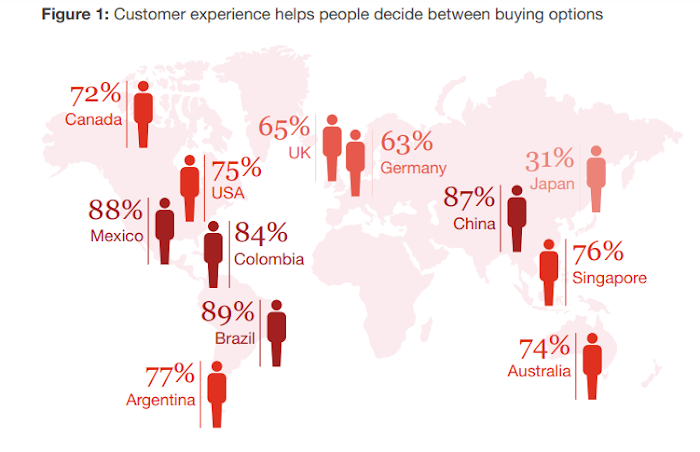
2. Write Your Story
You started your business to make money, yes. But you’re not Mr. Burns. Surely there are certain passions that underlie your business.
Brand development is a way of figuring out what’s important to your business and defining what you stand for. Your target audience will be able to relate to these ideas and values.
Writing your story proves your business isn’t just a faceless entity that’s after customers’ money which in turn builds trust. Unsurprisingly, 81 percent of consumers say they need to be able to trust a brand to buy from it.
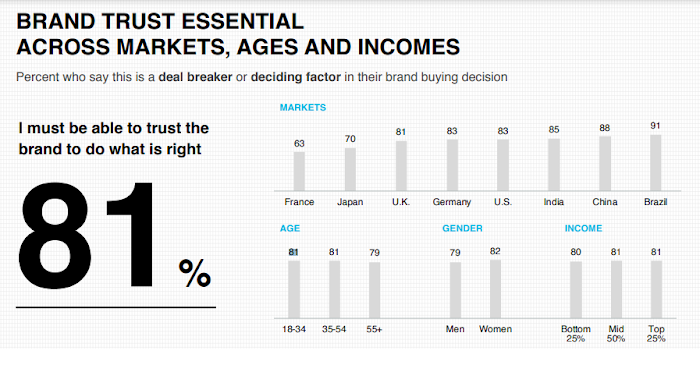
For Sensi Graves of Sensi Swim, it was about putting her own skin in the game. She maintains the face of the brand to offer her customers authenticity. This has a powerful impact for the branding of Sensi Swim.
3. Excel in Your Niche
When you position your brand in a way that’s distinctive from others, you stand out in your product or service category. Your brand becomes recognizable and you even have the ability to become an influential body in your industry.
Building a good reputation is key here. People expect more from brands than simply “business as usual” these days. Two-thirds of global consumers say a brand’s political or social stance affects their purchase decisions.
The 6 Stages of Brand Development
1. Define Your Core Values and Overall Mission
Consider what your business stands for and what you hope to achieve. When you clearly define these elements, you can incorporate them into your messaging and design.
This will help customers relate to you and find something they have in common with your brand. Customers are more likely to buy from a brand they have an affinity with.
For example, oral care company Quip uses branding to articulate its mission—simplified oral healthcare for families:

Quip is unique considering the fact that the dental care market is pretty saturated. What’s more, the brand’s mission-specific and rich with genuine purpose, i.e. an empty statement packed with buzzwords.
Prefacing its copy with the phrase “Guide a lifetime of good habits” Quip encourage consumers to act by making a purchase and become a part of their mission. The overall message carries across into the design, too, bolstering consistency across all facets of Quip’s branding.
These are the kind of qualities you should keep in mind when figuring out your core values and mission. What you come up with should be original, meaningful, actionable, and clear.
2. Determine Your Brand’s Positioning
Create a positioning statement to establish what sets you apart from competitors, what gives you an edge, and why customers should choose your company over others.
To do this you can carry out a SWOT analysis. Answer questions like these:
-
Strengths. What do you do better than competitors? What resources and assets do you have that set your business apart?
-
Weaknesses. What do your competitors do better? What advantages do they have?
-
Opportunities. Where are the gaps in the market? Is there anything you can capitalize on to aid success?
-
Threats. What potential problems might your business run into? What threats could competitors pose?
In relation to your customers, ask yourself questions such as:
- What pain point(s) does your product or service solve?
- How are customers currently solving that pain point?
- Why is your product a better way to solve the problem?
To give you an example of how you might use this information later, take a look at this excerpt from artisan cocktail company Haus’s homepage:

Haus express their differentiating factors in a subtle way and its design and imagery suggest a classier, more laid-back vibe whereas other alcohol brands may emphasize the raucous party atmosphere.
The brand talks about how it uses “only real ingredients,” insinuating that many other brands don’t, before intimating that their products have “lighter alcohol (half of what you find in traditional liquor).” These are clear distinguishers.
By knowing your positioning within your industry, you can easily convince customers that your product is the better choice.
3. Research Your Target Audience
The better you know your target audience, the easier it will be to create a brand that resonates with them. Create a well-defined picture of your target audience through proper research, not just conjecture.
A lot of businesses simply come up with customer profiles or personas based on what they think the customer’s wants and needs are. This is where you can one-up them.
Here are some ideas on how you can gather audience insights:
i. Social Listening
Social listening tools allow you to research certain keywords related to your product, industry, brand, or competitors and then discover what people discuss in relation to these topics.
You can use a tool like this to learn about new trends in the industry, customer pain points, turn-ons/turn-offs, and so on.
ii. Analytics
The major social media channels offer analytics tools where you can see data about customers and their interactions with your brand.
For instance, you can go to the Insights section of Instagram to learn basic demographic information about your followers. You can also gain insight into how they react to your content to learn whether some content resonates better than others.
iii. Competitor Analysis
You can glean a lot of information by looking at your competitors. Who is their audience? Where does it intersect with yours? How do they relate to their audience? Are they creating a positive customer experience? If not, what are customers missing from them? And so on.
The point is to not only learn about your target audience but also their expectations and how to meet them.
4. Develop Brand Guidelines
Create a resource that everybody in the company can refer to, and can be used across teams to maintain quality and consistency.
Your brand guidelines may contain the following:
-
Tagline. A punchy memorable phrase associated with your brand.
-
Mission Statement. A concise summary of your purpose.
-
Positioning Statement. A summary of your place within the industry.
-
Audience and Competitor Research. An overview of the research you gathered.
-
Style Guide. An index of design elements.
-
Content Guide. An overview of content goals, readership, and tone.
-
Brand Strategy. A plan for applying your branding in order to achieve your goals. (More on this in the next step.)
Activewear company Outdoor Voices provides an example of how your branding guidelines can be used to create a consistent, memorable experience.
The brand’s tagline, featured on its website, is “For Doing Things” and represents its view that activewear is for fun activities with friends, as opposed to the traditional gym-centric idea.
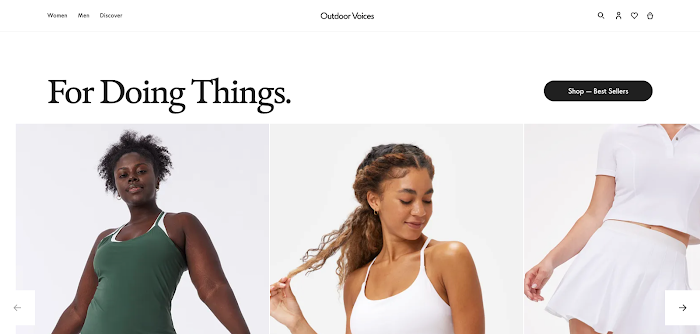
Outdoor Voice’s tagline is also used as part of a wider branding strategy, including using the hashtag #DoingThings in their Instagram bio and across their social media content.
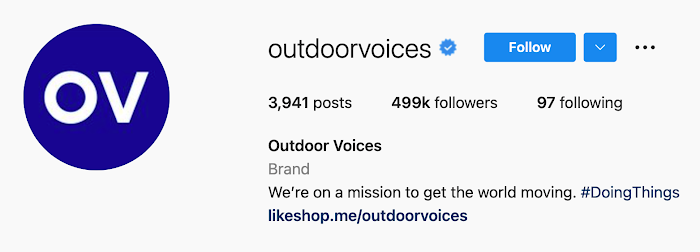
The tagline also encourages customers to become part of the brand’s story when they use the hashtag themselves. This is brand development at its finest.
5. Put Together a Branding Strategy
Determine how and where you’ll apply your messaging and design, i.e. your branding.
You can’t do things by halves or your branding will be all over the place. A strategy is necessary to build a consistent and recognizable brand. This is important as consistent brand representation can increase revenue by up to 33 percent.
Visual identity needs to be a pillar of your brand strategy, given that visual elements such as typography, graphics, images, and other elements of design provide an atmosphere or a feeling among consumers.
Ideally, you should aim to develop a visual identity that means something to your brand and is recognizable across channels and marketing materials.
Everlane, for example, adopts a simple, neutral, and cool approach to design across the board:

The brand’s simplicity promotes the idea that there are no bells and whistles needed; everything it sells makes sense. The company makes ethical wardrobe essentials and is all about transparency.
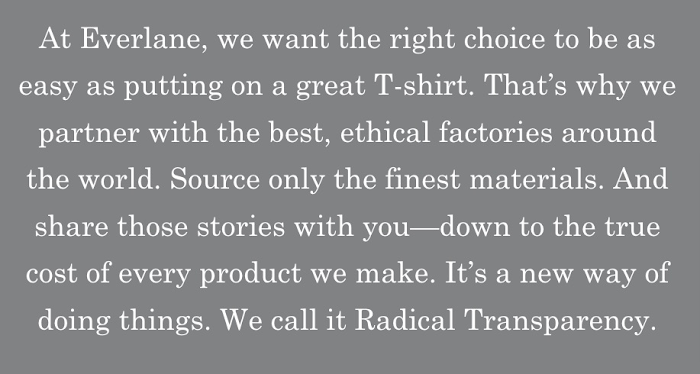
Your customer experience should also play into your brand strategy. When people think of your brand you may want them to think of quality, trustworthiness, transparency, or whatever it is you’ve decided is important to your brand.
Furthermore, though raising brand awareness is important, your brand strategy should be about more than just that. Rather you should aim to build a community around your brand, using the insights you’ve gathered.
There are several ways to create a feeling of closeness or community with your brand, but having a customer loyalty program is one of the best.
Bag seller Dagne Dover uses its rewards program to entrench users in the community. Customers earn points for signing up to the brand’s social media and submitting user-generated content, for example, which the brand then repurposes to trigger social proof.

6. Track and Tweak Your Branding
As I wrote at the start, brand development isn’t a one-and-done thing. For one, you have to maintain the quality of your brand. If your brand isn’t resonating with your target audience, you’ll have some work to do to remedy the problem.
Some ways to keep an eye on your brand are:
i. Measure Brand Awareness
Brand awareness is difficult to measure but not impossible. One tactic is to, again, employ social listening, but instead, to monitor the number of brand mentions you receive over time.
You can also assess your brand’s reach by tracking the view counts for posts that mention your brand compared to competitors.
ii. Gather Customer Feedback
There are several ways to gather customer feedback. One idea is to use a Net Promoter Score (NPS) survey which you can show new visitors via a popup or send to customers via a targeted email campaign.
Here’s an example from activewear brand Sweaty Betty:
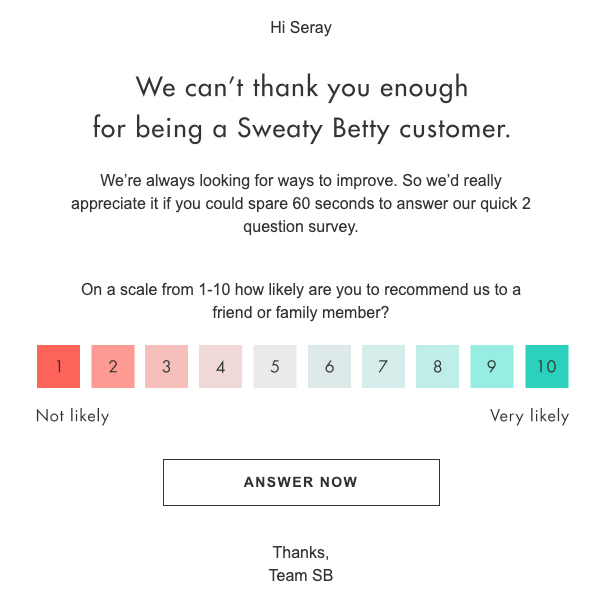
Ask a question such as “How are you enjoying X?” or “How likely are you to recommend X to a friend?” Then you’ll get an idea of how strongly customers feel about your brand and if there’s room for improvement.
iii. Carry Out Sentiment Analysis
Sentiment analysis tools allow you to manage your brand’s reputation. Using AI to pick out keywords and information from hundreds of social media posts, reviews, page comments, and the like, sentiment analysis tools form a picture of how people think and feel about your brand. You can then use this information to enhance the reception of your brand over time.

Final Word
Brand development is vital if you hope to form long-lasting relationships with customers. You’ll be able to attract and serve customers much more easily, build trust, and stand out among an ocean of competing companies.
Successful brand development involves defining your personality and what your brand is all about, understanding what gives you a competitive edge, and figuring out how to endear customers to you. Then, of course, maintaining the fabulous brand you’ve built.
To get started, outline your brand’s underlying principles and main mission.
Then, take it from there.



